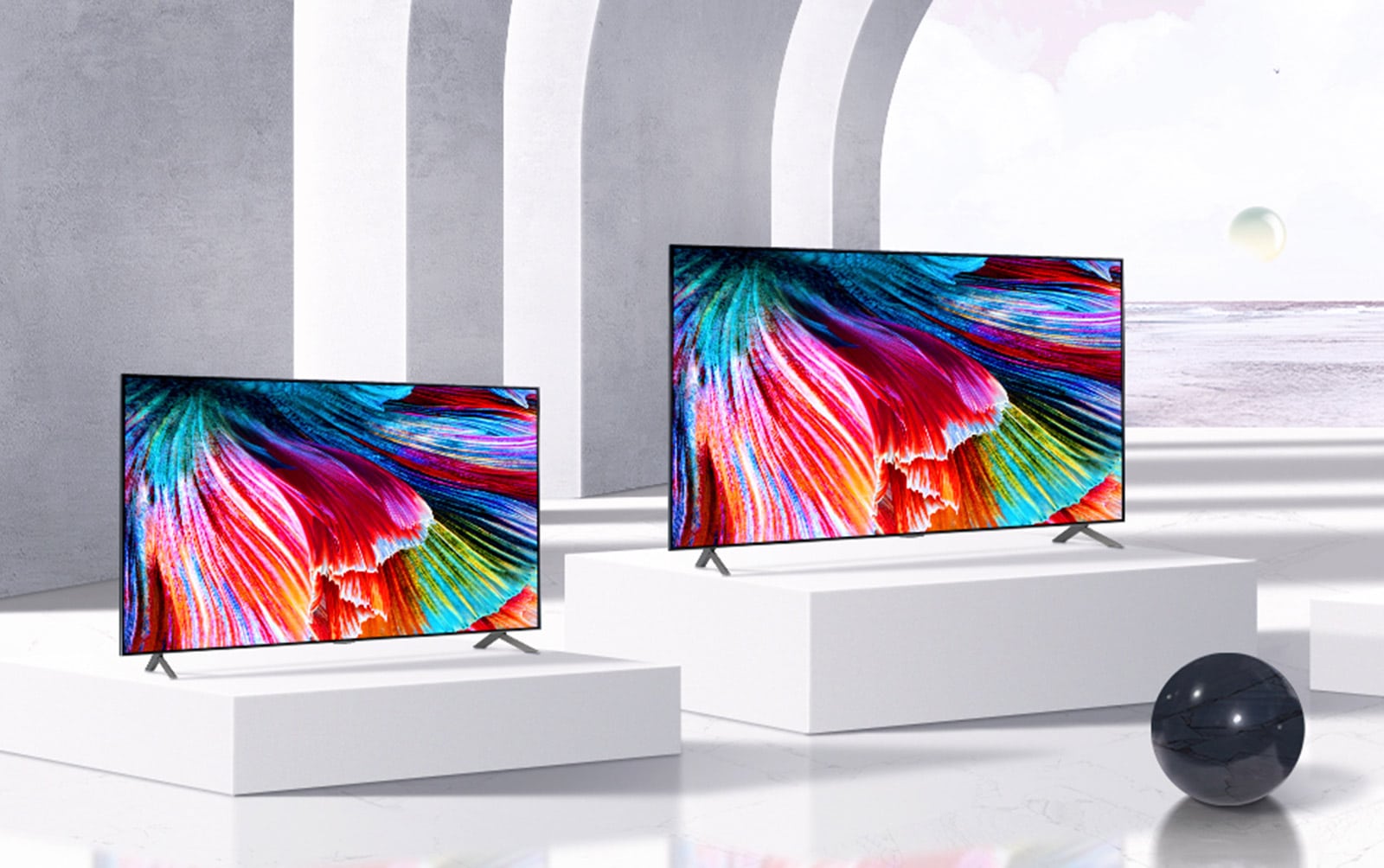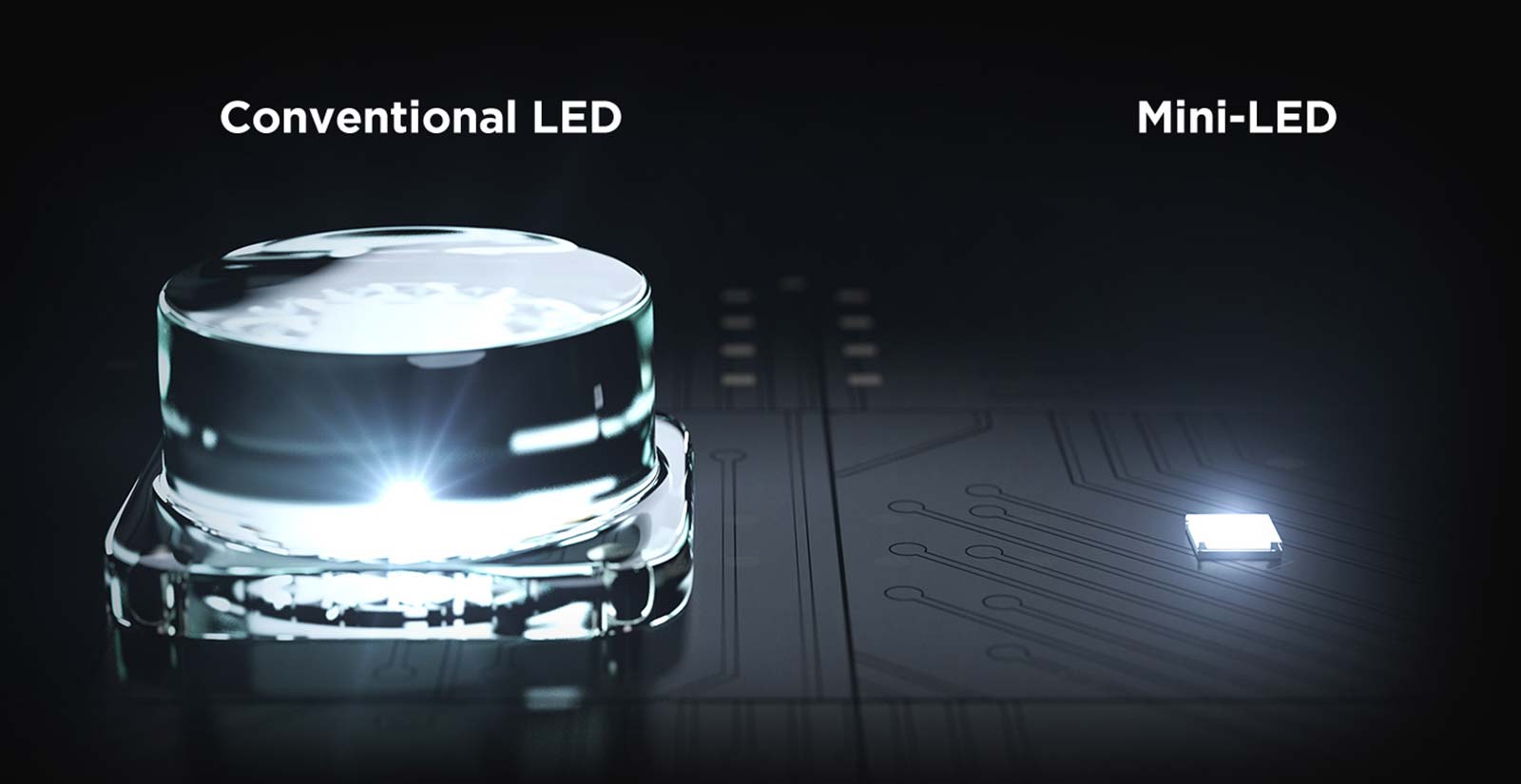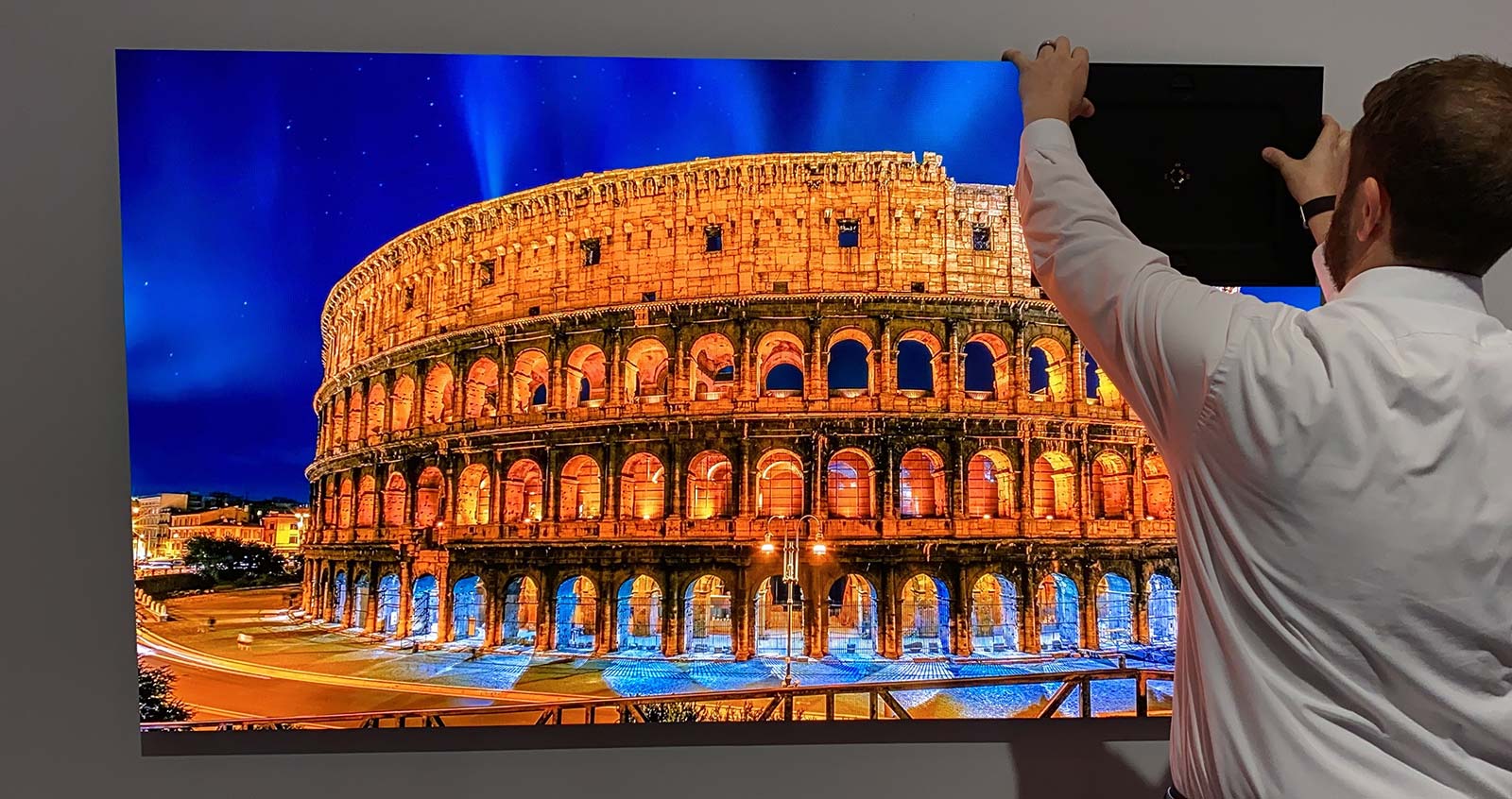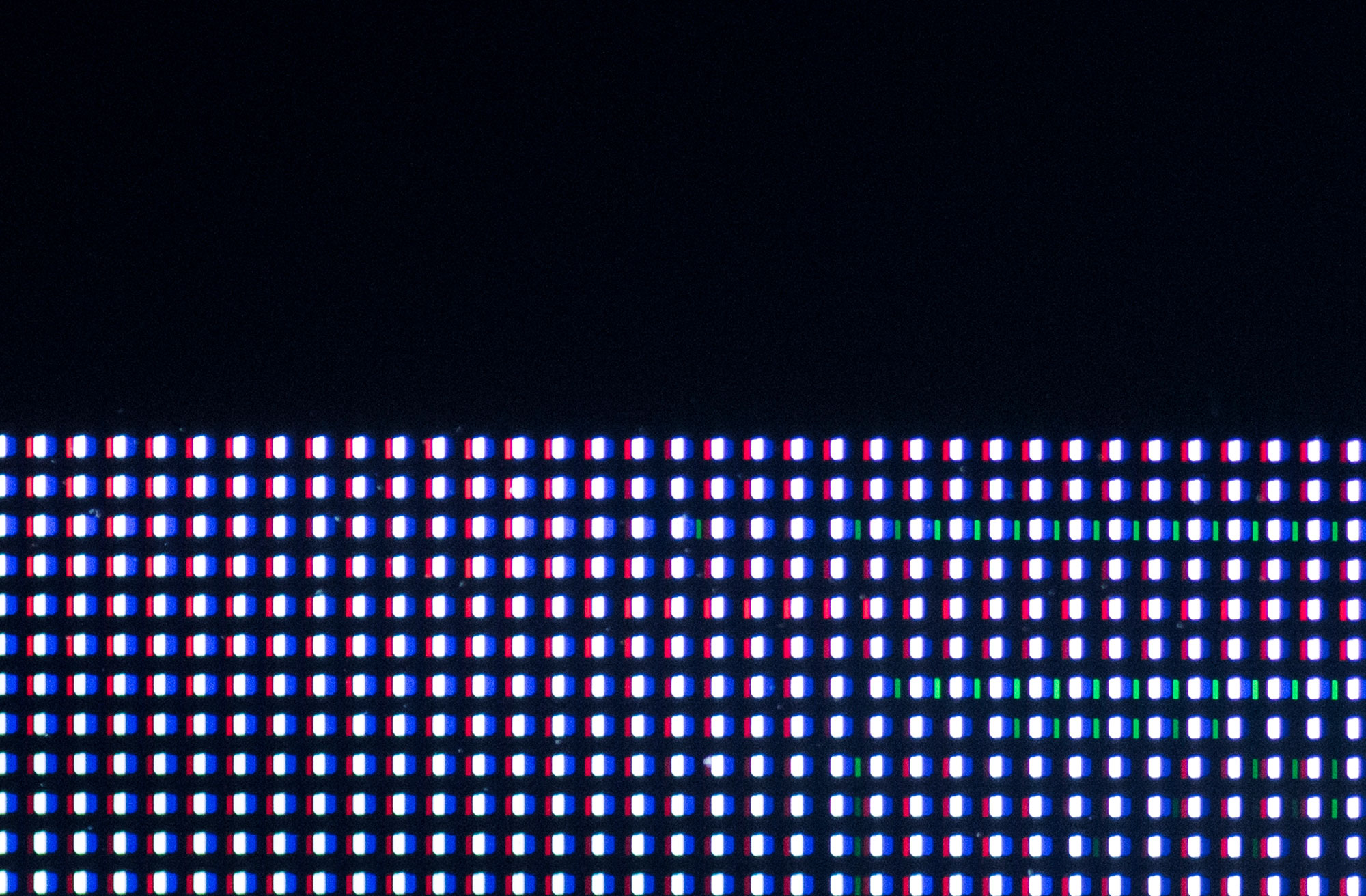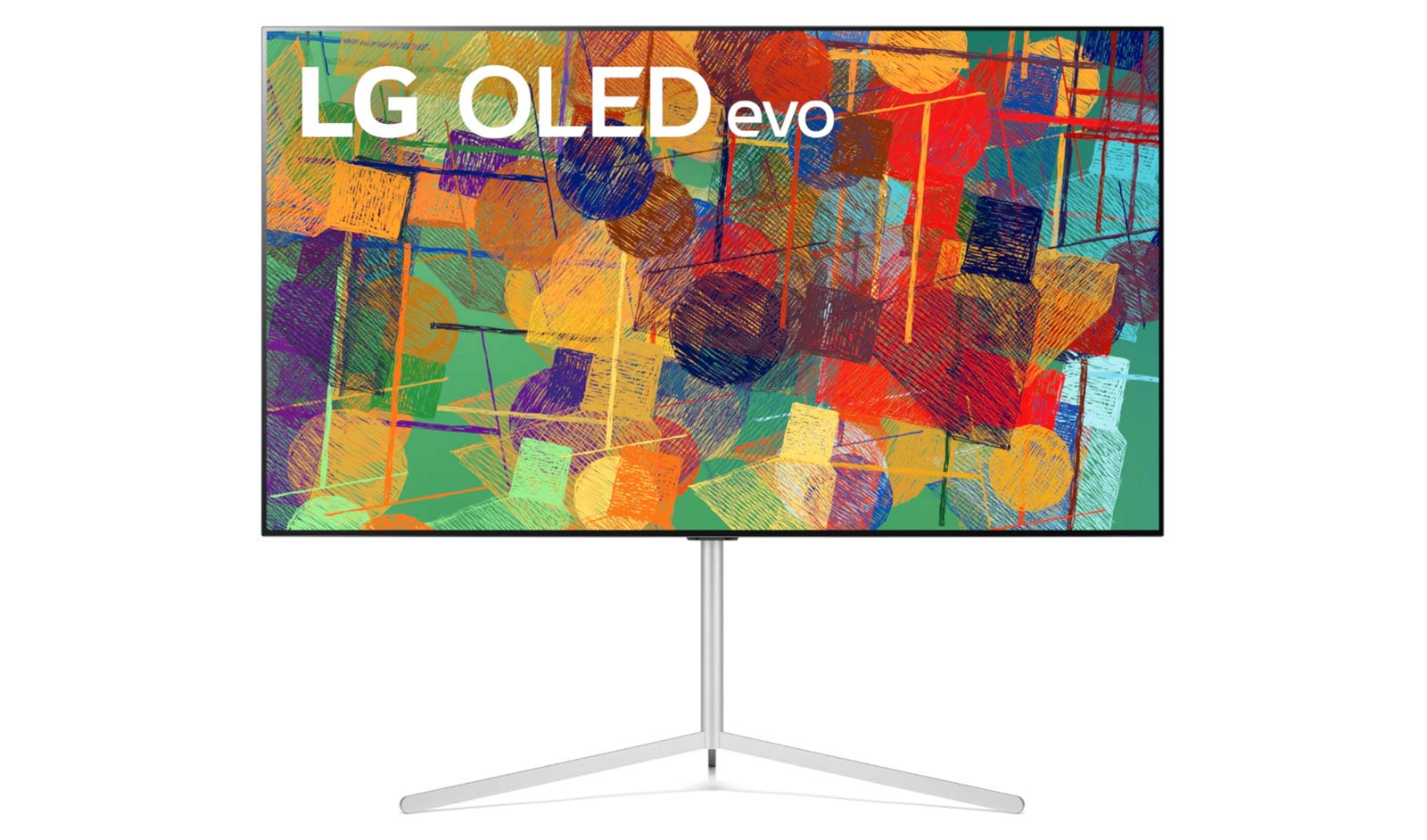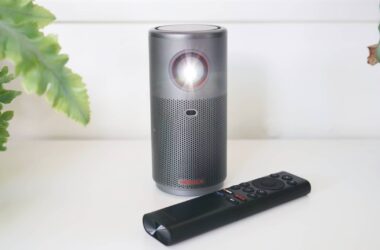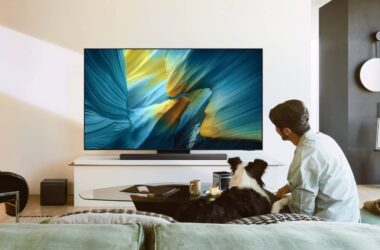There’s a lot happening in TVs this year, but what does it mean? We’ll go through the jargon and what’s coming to help you make heads and tails of it.
It’s a new year, CES 2021 has come and gone, and we now have a good idea for what sort of TVs you can expect to find in 2021. There are lots of options, and lots of terms that might make little sense, so it’s time to go through it all.
TV technology in 2021
The jargon this year is strong, and possibly stronger than any other, thanks in part to the abundance and variety of technology heading to stores and living rooms this year. Between LED, QLED, QNED, ULED, Mini LED, Micro LED, Laser, and OLED, there’s sure a lot happening, but what does it all mean?
Let’s break it down bit by bit to explain it all, so you can walk into an electronics store or read a review and know full well what it all means, starting with the most basic aspect of TVs of all: LED TVs.
What is an LED-backlit LCD TV?
The base technology of most TVs available in 2021 (and before it), an LED TV is an LCD TV with a layer of Light Emitting Diodes (LEDs) in the back that light up around certain areas to control the lighting of the screen. Think of this as the way lighting for dark blocks of colour are controlled, with rows of lights set into zones in the screen, and the TV turning them on and off, lighting up sections of the TV.
Any time you see “LED” in a TV technology, it’s typically referring to LED backlit TVs using this sort of approach, though the technology behind different versions can vary wildly between models and brands.
What is quantum dot?
A phrase you’ve probably seen a few times, “quantum dot” is basically a layer of crystals that enhance the colour of the pixels on LCD panels. Think of this as an extra layer of crystals on specific TVs, typically those in the high-end, able to increase the colour density by honing the colour slightly.
Quantum dot has been around for quite some time, and you can find it on a TV from nearly every manufacturer of LED backlit LCD TVs.
What’s QLED?
Samsung’s taken on quantum dots is QLED, which is what the “Q” stands for (the “LED” means it’s an LED backlit TV, which is about all Samsung makes in 2021 for TVs).
While the “Q” means “quantum dots”, Samsung’s take on the technology is a little different, and are metal coated, which Samsung uses to improve colour volume, making for a different formula of quantum dot.
What is ULED?
Hisense’s approach to panel technology is known as “ULED”, though beyond the “LED”, it doesn’t really mean much of anything. Every time we try to get an answer out of Hisense for what the “U” means, we’re left empty-handed.
All you really need to know is that ULED is Hisense’s technology stack to what goes inside its LED-backlit TVs. That doesn’t usually include other technologies like quantum dot or Mini LED (more on that in a moment), and Hisense typically draws attention to those technologies in its model names when they’re involved.
What’s Mini LED?
A bright new approach for LED backlit TVs in 2020 and beyond, Mini LED takes the same principle behind LED TVs, but shrinks the LEDs to a much smaller size, providing thousands of tiny little LEDs that sit behind the panel to light up a screen.
By using small LEDs versus a larger style, Mini LED allows TV manufacturers to light up much smaller zones, controlling the brightness and contrast more directly. In theory, it means that a TV with Mini LED will deliver more colour and contrast uniformity as to how the picture should look, rather than sections that seem uneven due to the backlighting LEDs being too large for the scene.
TCL was one of the first to tackle the technology, launching Mini LED on screens in 2020, however this year, it’s not alone. In 2021, nearly every manufacturer is using some form of Mini LED for a range of its LED backlit TVs, except for Sony, which hasn’t adopted the technology yet.
What is QNED?
LG is one of the companies taking on Mini LED, and is combining it with its other technology, NanoCell, which is basically LG’s version of quantum dot.
Merging the two technologies has left LG with a new acronym, “QNED”, which essentially stands for quantum dot, NanoCell, and Mini LED.
What’s Neo QLED?
Samsung’s take on the technology is to use the same tiny Mini LEDs, but to place them behind its metal-coated quantum dot screens. While Samsung hasn’t quite gone into detail about its Mini LED technology, it has said that the hardware is controlled by “Quantum Matrix Technology” and a “Neo Quantum Processor” to handle those tiny LEDs, resulting in a little more quantum tech than merely crystals that enhance the colour.
All of that comes together in Samsung’s Neo QLED, which is basically Mini LED backlit TVs with quantum dots and quantum processing.
What is Micro LED?
A different technology again, Micro LED is a concept only Samsung offers, but not until later in the year. Different from Mini LED, Micro LED uses small blocks of self-emitting LEDs to construct a large TV that is basically a wall that’s also a screen.
It’s no wonder Samsung originally called it “The Wall”, but these blocks of self-illuminating pixels essentially work without a backlighting layer, and provide a big, bright, and vivid picture for people after a huge screen and aren’t afraid of spending big.
What is Laser TV?
Yet again a different technology, Laser TV is actually a laser projector with a TV tuner built in, basically having you run a projector with a screen thrown into the package, but one that runs in daylight, not just low-light.
Laser projectors use laser light sources for their projection, which is incredibly bright and can run even when a room is lit, something LED projectors don’t always achieve.
What is OLED?
The most premium of technologies, OLED is an Organic Light Emitting Diode that doesn’t need a backlight and emits its own lighting source.
Different from LED backlit TVs and Mini LED backlit TVs, OLED TVs use millions of pixels with their own light source, because each pixel is a light source. This approach means that when the screen needs to show black, the OLED pixels making up the image switch off, compared to with LED backlit TVs that control the lighting in zones so that some areas look brighter or darker than others. Beyond this, OLEDs are known to deliver heightened and truly vivid colour.
What is OLED Evo?
2021’s contribution to OLED screens, OLED Evo is LG’s newest take on the technology, boasting a little more brightness from the technology, which may increase the contrast, too.
The TVs you can expect to find in 2021
Now that you know what everything means, it’s time to know who’s making what, and when you can expect it, starting with the big brands. In Australia, there’s five main brands producing TVs, after Panasonic bowed out last year.
Hisense
In 2021, Hisense will offer a combination of TV options, ranging from its standard “ULED” — which is just LED-backlit — to options with quantum dots, TVs with Mini LEDs, and even a few Laser TVs.
The newest of all of these is Mini LED TVs Hisense plans to release later in the year, which should arrive in both 4K and 8K options.
We’re also expecting a little more from Hisense’s Dual Cell technology, something that launched late last year and used two layers of LEDs to control brightness with a first layer of colour and a second of monochrome. There’s been no word at CES this year on whether Hisense plans to improve this technology in 2021, so we’re half expecting to see another appearance of this at some point later in the year.
LG
Next up is LG, which will have a range of LED TVs and OLED TVs, the latter of which it practically dominated.
Talking to LG at CES 2021, we’ve heard of three distinct varieties of LED backlit TVs, including a standard LG UHD TV without the quantum dot technology LG calls “NanoCell”, a range of NanoCell quantum dot LED backlit TVs, and the latest high-end 4K LED backlit TV, the QNED TVs, complete with quantum dots and Mini LEDs.
LG also has a variety of OLED TVs this year, ranging from the entry-level A1, the slightly more impressive C1 which updates the imaging processor, the signature Z1, and the “gallery” styled G1 which is the only screen in the LG 2021 OLED line-up to include the new OLED Evo panels.
Samsung
Samsung is offering a few options of its own this year, ranging from the new Neo QLED TVs with Mini LEDs, which may appear alongside the standard QLED TVs without the quantum dots. We’re also expecting a standard 4K UHD line this year, likely a follow-up to last year’s TU range.
Samsung also has another technology coming for walls in its Micro LED TVs, and it has a few lifestyle TVs, too, one of which is a Laser TV called “The Premiere”.
Sony
Sony’s screens will run across OLED and LED-backlit TVs, though none of the latter support Mini LED. Rather, Sony’s big focus in 2021 is actually on cognitive AI, with its 2021 OLED TVs likely using LG panels with Sony’s imaging processors (like it has in the past), and the Sony LED backlit TVs instead leveraging LED panels with improvements to how they handle light and colour.
TCL
Finally, there’s TCL, which is one of the companies that first showcased Mini LED, appearing on its 2020 TVs. This year, there’s more of that coming, though we’re waiting to see the variety of TCL TVs in the 2021 pipeline.
TCL has already talked up what we can expect from its improved Mini LED technology, which is now in its third generation, and cuts the distance between its tiny LEDs and the LCD panel, reducing it to zero millimetres in TCL’s “OD Zero” tech.
Other brands
While Hisense, LG, Samsung, Sony, and TCL make up the big brands Australia has to choose from, there are, of course, smaller brands, too. Companies such as Kogan, Ffalcon, Blaupunkt, Hitachi, Philips, not to mention Aldi’s own house brand also offer TVs, though these typically don’t use tech found in the latest and greatest.
You may expect some of these terms to pop up, however, just don’t expect the smaller brands to get something like Mini LEDs in 2021.


